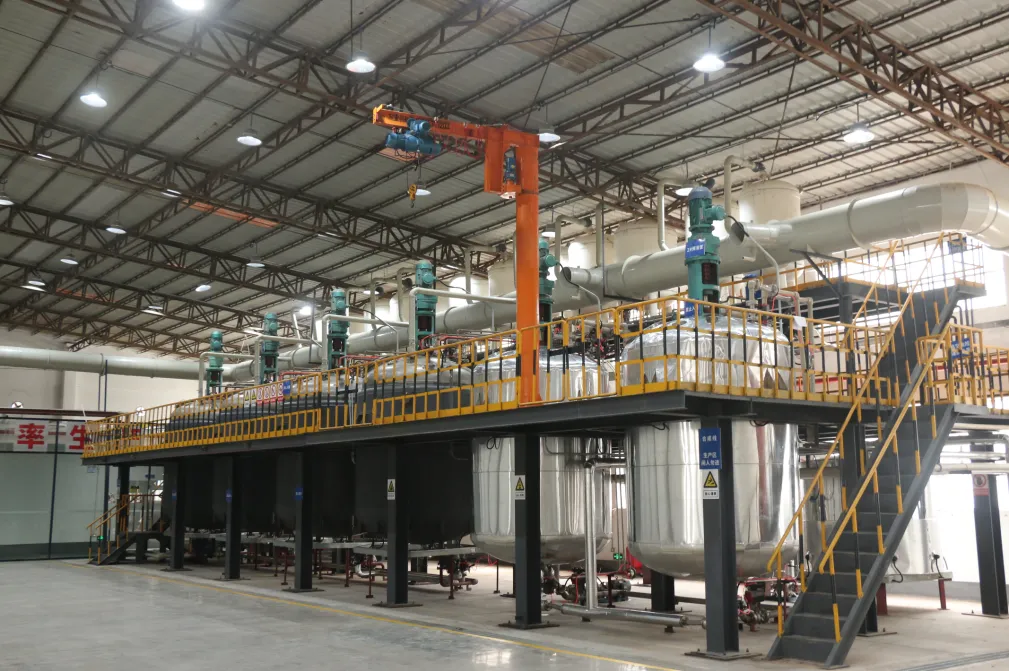
The Science of Water Reducing Admixtures: Improving Concrete Performance with Advanced Superplasticizers
Concrete is one of the most widely used construction materials in the world, and its performance heavily depends on the mix composition, including the use of chemical additives.

Subtitle 1: Understanding Water Reducing Admixtures and Their Types
Among these, water reducing admixtures are critical for enhancing workability, strength, and durability while reducing the water-to-cement ratio.
There are several water reducing admixture types, typically categorized into three levels based on their efficiency:
Normal water reducers, which reduce water content by 5–10%
Mid-range water reducers, which reduce water by 10–15%
High range water reducers (HRWR), capable of reducing water by up to 30%
These admixtures are often used to produce high-strength or highly workable concrete without increasing water content. A typical high range water reducer concrete mix allows excellent flowability, making it ideal for structures with dense reinforcement or complex formworks.
Modern concrete formulations often rely on polycarboxylate superplasticizers, considered the most effective class of water reducers. These polymers enable significant water reduction without affecting setting time, and they improve the dispersion of cement particles, leading to higher early and final strength.
The polycarboxylate water reducer works by introducing electrostatic repulsion and steric hindrance, effectively separating cement particles. This improves flowability while maintaining structural integrity. These advantages make it ideal for ready-mix, precast, and high-performance concrete applications.

Subtitle 2: PCE-Based Superplasticizers and Market Trends
One of the most advanced materials used in concrete today is the PCE based superplasticizer, short for polycarboxylate ether. As a type of poly carboxylic ether, PCE provides exceptional water reduction, long slump retention, and compatibility with various cement types. It is now the dominant ingredient in high performance water reducer formulations.
PCE superplasticizers are designed through controlled polymerization, allowing customization of side chains and molecular weight. This level of control results in tailored admixtures for specific concrete requirements—whether for long transport times, hot weather conditions, or ultra-high-performance concrete.
A typical concrete water reducer admixture using PCE allows for high fluidity without segregation. It’s especially useful for self-consolidating concrete, which requires excellent flow without vibration. Additionally, PCE admixtures reduce shrinkage and improve surface finish.
As demand grows, so does global production capacity. Numerous PCE factory operations in China, India, and Europe supply both standard and customized formulations. When choosing a supplier, factors like production quality, chemical purity, and delivery logistics should be considered.
Market pricing can vary widely. The superplasticizer price depends on raw materials, purity, formulation, and volume. PCE-based products are typically more expensive than traditional lignosulfonate-based admixtures but provide superior performance and efficiency. For large-scale projects or ready-mix operations, the cost is often offset by the reduced cement content and improved long-term durability.
Contractors and engineers often explore examples of water-reducing admixtures for practical comparison. These may include:
Lignosulfonates (first-generation water reducers)
Sulfonated naphthalene formaldehyde (SNF)
Sulfonated melamine formaldehyde (SMF)
Polycarboxylate ethers (PCEs)
Each has its pros and cons, but PCE-based superplasticizers remain the top choice for high-performance applications.
Choosing the Right Water Reducing Agent for Modern Construction
Choosing the right concrete water reducing agent is essential for achieving optimal strength, flow, and durability in modern construction projects. Whether you’re building a high-rise, a bridge, or a precast concrete unit, the use of a high performance water reducer such as a polycarboxylate superplasticizer can significantly improve your concrete's performance.
The continued innovation in water reducing admixture types allows concrete producers to tailor mixes for specific environments and structural needs. With the widespread availability of quality products from leading PCE factory operations, and competitive superplasticizer price options in the market, advanced concrete technology is more accessible than ever.
Understanding the advantages of PCE based superplasticizers, their molecular structure, and their behavior in different mix designs helps contractors make informed choices that lead to cost savings, improved durability, and superior structural performance.
As sustainability becomes a priority, these admixtures also contribute to greener construction by reducing cement usage and lowering carbon emissions, proving that chemistry plays a vital role in shaping the future of infrastructure.
FAQ Title: Frequently Asked Questions About Concrete Water Reducers and Superplasticizers
What are the main types of water reducing admixtures used in concrete?
Answer:The main water reducing admixture types include lignosulfonates, sulfonated naphthalene formaldehyde (SNF), sulfonated melamine formaldehyde (SMF), and polycarboxylate superplasticizers (PCEs). PCEs are the most advanced and widely used today due to their superior performance.
What is the function of a high range water reducer in concrete?
Answer:A high range water reducer concrete formulation uses advanced superplasticizers like PCEs to significantly reduce water content while maintaining or improving workability. This leads to higher strength, improved durability, and better flow characteristics.
How do polycarboxylate water reducers differ from older admixtures?
Answer:Polycarboxylate water reducers offer better dispersion, longer slump retention, and higher water reduction compared to older materials like lignosulfonates or SNF. They also allow for more customized performance due to their molecular design.
What factors influence the price of superplasticizers?
Answer:The superplasticizer price is affected by raw material costs, purity, manufacturing method, grade, and purchase volume. PCE-based products tend to cost more but offer superior efficiency and performance.
Can you give examples of water-reducing admixtures commonly used in the market?
Answer:Yes, examples of water-reducing admixtures include lignosulfonate (first-generation), SNF and SMF (second-generation), and polycarboxylate ether (PCE), which is the third-generation and the most effective type currently available.
-
Hydroxypropyl Starch as a Sustainable Construction AdditiveNewsNov.24,2025
-
The Gelation Properties of CMCNewsNov.21,2025
-
Redispersible Latex Powder and Water Retention CapacityNewsNov.21,2025
-
Dosage Control for Polycarboxylate Water ReducerNewsNov.21,2025
-
Film-Forming Properties of Polyvinyl AlcoholNewsNov.21,2025
-
The Function of Gypsum Additives in MortarNewsNov.21,2025





















